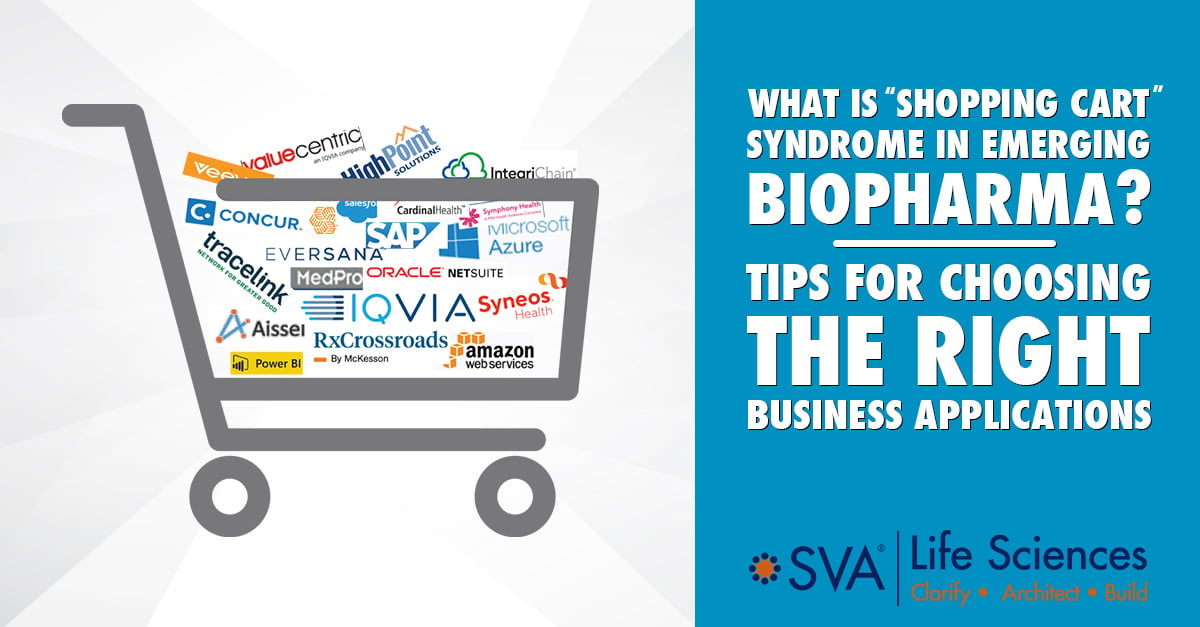Emerging organizations and the leaders they hire naturally gravitate to what they know when it comes to choosing business applications to support the launch of their first product and the company that supports it. But a lot of the time, their shopping cart of applications fills so quickly it ends up toppling over. We’ve been noticing what we call the “shopping cart syndrome,” where a company begins to rapidly implement different point solutions without an aligned view of the big picture. This happens for a few reasons, sometimes it’s the influence of voices on the team who are partial to certain solutions, or it happens out of pure need to get solutions implemented as soon as possible. The problem with the “shopping cart syndrome” is that the resulting cobbled-together solutions are not only collectively expensive, niche, and not mindful of getting the biggest bang for your buck, but many of them may constrain the business or present other unintended consequences as the company evolves.
Avoid Over-Shopping for Applications
A fit-for-purpose, architectural-level systems-implementation strategy is the key to avoiding the overflowing shopping cart and putting vital business objectives and requirements in front of the shopping process. This path should be created at the earliest stages in the product and corporate lifecycle. When it comes to architecting with solution options in mind, think platforms and strive for simplicity. We find platform solutions to be the most successful, especially for organizations in the clinical and regulatory stage, because they allow you to use the portion(s) that you need at that time while allowing for growth into what’s needed later.
Gauge Digital Readiness
The integration process is messy, difficult, and expensive, and even more so if your organization isn’t digital-ready. 2020 transformed the acceptance of a digital strategy; today’s workflows, file-search capabilities, and other critical efficiency elements are becoming more standard, but emerging organizations should be considering these sooner rather than later, as “paper” systems do not scale. Establishing good practices early around document naming conventions and other workflow-driven processes will create major advantages in simplifying the introduction of applications.
Don’t Be Afraid of the Words “Process” and “Structure”
The entrepreneurial mindset of an emerging organization can feel an almost antibody resistance to process and structure. But in this case, process is like a highway, where an appropriate level of process and structure is the only way to get where you’re going as quickly as possible and without getting lost. Conversely, filling your shopping cart and implementing solutions without a plan is like trying to find a destination while driving back roads without GPS.
In biopharma, especially in Cell & Gene therapy companies, you’re facing a unique challenge in that process and structure need to be created from scratch. Stop and ask: what are we looking to automate, what problems need to be solved, what part of the “highway” do we need to lay down?
We hope our recommendations are helpful in navigating the applications shopping process. Have you experienced an over-flowing shopping cart? If so, how did it affect your business and what did you do about it?

© 2021 SVA Life Sciences

